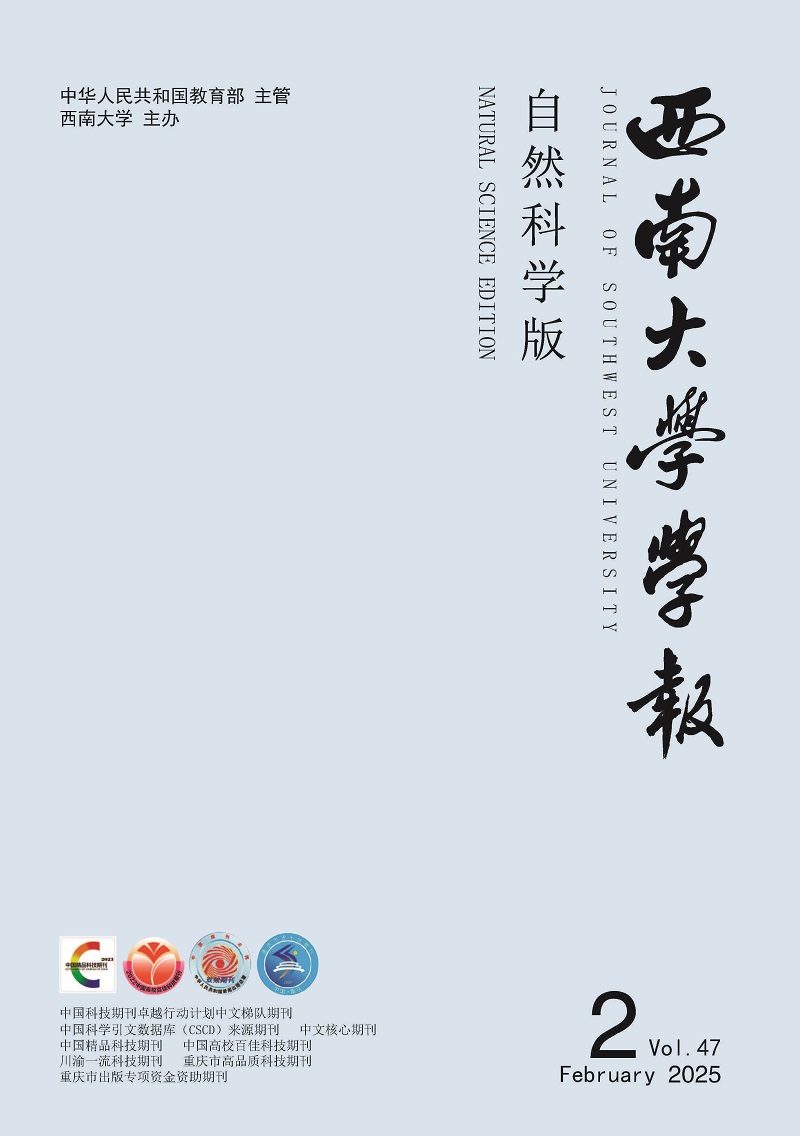-
近几年来,每次手足口病爆发,都会对国家和社会造成比较严重的影响,文献[1]对于非自治双菌株的传染病模型进行了研究和理论分析.近些年,许多学者对于各种类型的非线性感染率的传染病模型进行了广泛的研究[2-7].本文考虑对手足口病影响较大的3种病毒株,通过研究CA16,EV71以及其他病毒株的感染率并建立数学模型,达到对于手足口病的传播规律的深入认识.首先,假设模型参数S(t)表示t时刻的易感人群,Ii(t)(i=1,2,3)分别表示t时刻CA16,EV71病毒以及其他病毒感染手足口病的人群数,建立如下模型
其中:β1(t)是CA16病毒感染率,β2(t)是EV71病毒感染率,β3(t)是其他病毒感染率,ρ1是人群中感染CA16病毒康复率,ρ2是人群中感染EV71病毒康复率,ρ3是人群中感染其他病毒康复率,α是人群未感染病的自然出生率或自然死亡率并假设它们相等.
HTML
-
将在t时刻的人群总数记为
由(1)式可得
对(2)式积分后得
这里的P0是时间为初始时刻的总人口数.由于
有
在本文接下来的部分,假设总人口数为一个常数,并且将此常数设为1.
在初始条件S(0)=S0,I1(0)=I10,I2(0)=I20,I3(0)=I30的假设下,系统(1)满足
对于任意的时刻都有P(t)=1.因此,易感人群可以表示为
将(3)式带入系统(1)得
考虑集合
很明显,集合Ω是系统(2)一个正向不变集.令
为了定义手足口病3种病毒株不同的基本再生数,考虑周期函数的平均函数.假设f(t)是以ω为周期的函数,那么
其中〈·〉表示周期函数的平均值.由文献[8]的3.1.2节可得
现在,定义CA16,EV71以及其他病毒株的基本再生数分别为
因此,有下面结论.
命题1 如果R1<1,R2<1且R3<1,那么系统(1)的无病平衡点E0=(1,0,0,0)是全局渐近稳定的.
证 注意到S(t)≤1,有
对(5)式求解,得到
因此,在R1,R2,R3同时小于1的条件下,当t→∞时,I1(t)→0,I2(t)→0且I3(t)→0.
-
本节讨论单个病毒株存活下来的条件.首先,假设I2(0)=0,I3(0)=0,那么I2(t)=0,I3(t)=0,t∈(0,+∞).通过与文献[9]类似的讨论,得到下面的结果.
引理1 如果R1>1,R2<1且R3<1,系统(4)存在唯一周期解ζ1(t)=(γ1(t),0,0).此外,如果ζ1(t)是系统(4)满足初始条件I1(0)>0的一个解,有
若R2>1,R1<1且R3<1时存在唯一的周期解ζ2(t)=(0,γ2(t),0),若R3>1,R1<1且R2<1时存在唯一的周期解ζ3(t)=(0,0,γ3(t)),这两种情形与引理2是对称的.下面,探究单病毒株周期解的稳定性,在系统(4)单病毒株的周期解附近线性化.不失一般性,可以设病毒株(1)的周期解为ζ1(t)=(γ1(t),0,0),其他的情形也是对称的.
引入变换I1(t)=y1(t)+γ1(t),Ij(t)=yj(t),其中yj(t)(j=1,2,3)是扰动项,那么,线性化后的形式为
线性系统(4)可以被写成y′(t)= B (t) y (t),其中B (t)是系数时间依赖矩阵.为了探究线性周期系统零解的稳定性,需要构造一个基解矩阵.首先,必须找到系统的一个线性无关解,令yk(t)=0,k=2,3,这样,可以解(1)式第1个方程
得到(8)式的一个解为
其中b11(t)是y1左项系数.由此,(y1(t),0,0)是基解矩阵的第1列.为了获得剩余的解,令yj(t)=0,j=2,3且j≠k,k≠1,然后,可以解(7)式第2,3方程
其中:b22(t)是系统(4)的第2个方程右边的y2前的系数,b33(t)是系统(4)的第3个方程右边的y3前的系数.在(7)式第一个方程中,yk(t)被替换后,方程能被解出来,且解是一个复杂的表达式,定义为y1k(t).
令基解矩阵
其中Ψ (ω)的Floquet乘子为
由文献[10]可知,当R1>1时,方程
有唯一的正周期解.假设γ1(t)是系统(4)第一个方程的周期解,且满足方程(9).由于
那么,对方程(6)在[0,ω]上积分有
因此,第一个Floquet指数为
其它两个Floquet指数分别为
由Floquent定理知道,如果λ11<0,λ12<0且λ13<0,那么单病毒株的振荡解ζ1(t)是局部渐近稳定的.如果存在λ1k>0,k=2,3,那么,单病毒株的振荡解ζ1(t)是不稳定的.
定理1 如果R1>1,R2<1且R3<1,那么单病毒株的周期解ζ1(t)=(γ1(t),0,0)是全局稳定的.
证 任意取ε>0,使得(1-nε)R1>1,由命题1,当t→∞时,I2(t)→0和I3(t)→0,即存在T>0,当t≥T时,I2(t)≤ε,I3(t)≤ε.通过变换系统(4),假设对于所有的t,都有Ii(t)≤ε,i=2,3,因而系统(4)的第一个方程的解满足以下不等式
接下来考虑
系统(2)的第一个方程的解I1(t)满足
其中Y1(t)和Z1ε(t)是(7)式两个方程相同初始条件下的解.不难发现当ε→0时,
根据引理1,(10)式第一个方程有唯一的周期解γ1(t),由于(1-nε)R1>1,定义γ1ε(t)是方程(10)的第二个方程的唯一的周期解.当t→∞时,能够得到
由于(12)式不等式中ε可以取任意小,因此,当(t→∞)时I1(t)→γ1(t).
-
据文献[9-10],如果病毒株的感染率是常数,则它与人群的密集程度κ和每一种病毒株传播的概率成正比,即
因此,假设模型(1)的3种病毒株周期感染率β1(t),β2(t),β3(t)为
其中:κ(t)是以ω为周期的非负周期函数;常数p1,p2,p3分别为CA16,EV71以及其他病毒的染病概率.据此,3种病毒株的基本再生数分别为
不失一般性,假设EV71病毒株I2有最大的基本再生数.
定理2 如果R2>R1>1且R2>R3>1,那么,当t→∞时,I1(t)→0,I3(t)→0,|I2(t)-γ2(t)|→0即CA16病毒株和其他病毒株被竞争排斥掉,只有EV71病毒株持续生存.
证 对于病毒株I1和I3而言,考虑
对ν1(t),ν3(t)求导,可以得到
化简(13),(14)式得
对(15),(16)式从0到t积分,可得
对(17),(18)式同时取极限(t→∞),(17),(18)式右边收敛于正数
由于ν1(0)>0且ν3(0)>0,得到
因此,当t→∞时,ν1(t)→∞,ν3(t)→∞,又因为I2(t)是有界的,所以当t→∞时,ν1(t)→∞,ν3(t)→∞.据定理1知EV71病毒株能够持续生存,而且系统(4)的解收敛于ζ2(t).
-
令系统4的病毒感染率分别为β1(t)=a+bsin(c1t+c2),β2(t)=c+dsin(c1t+c2),β3(t)=l+fsin(c1t+c2),并且取
$c_{1}=\frac{2 \pi}{52}$ ,c2=2,α=0.000 16,ρ1=0.823 5,ρ2=0.783 5,ρ3=0.75,b=0.3,d=0.4,f=0.3,I1(0)=0.6,I2(0)=0.3,I3(0)=0.1,a=1.4,c=2.0,l=1.3.由图 1可以发现EV71病毒株(y曲线)的感染率最大,随着时间无限推移,EV71病毒株能够持续生存,而CA16病毒株(x曲线),其他病毒株(z曲线)会被EV71病毒竞争排斥掉.







 DownLoad:
DownLoad: